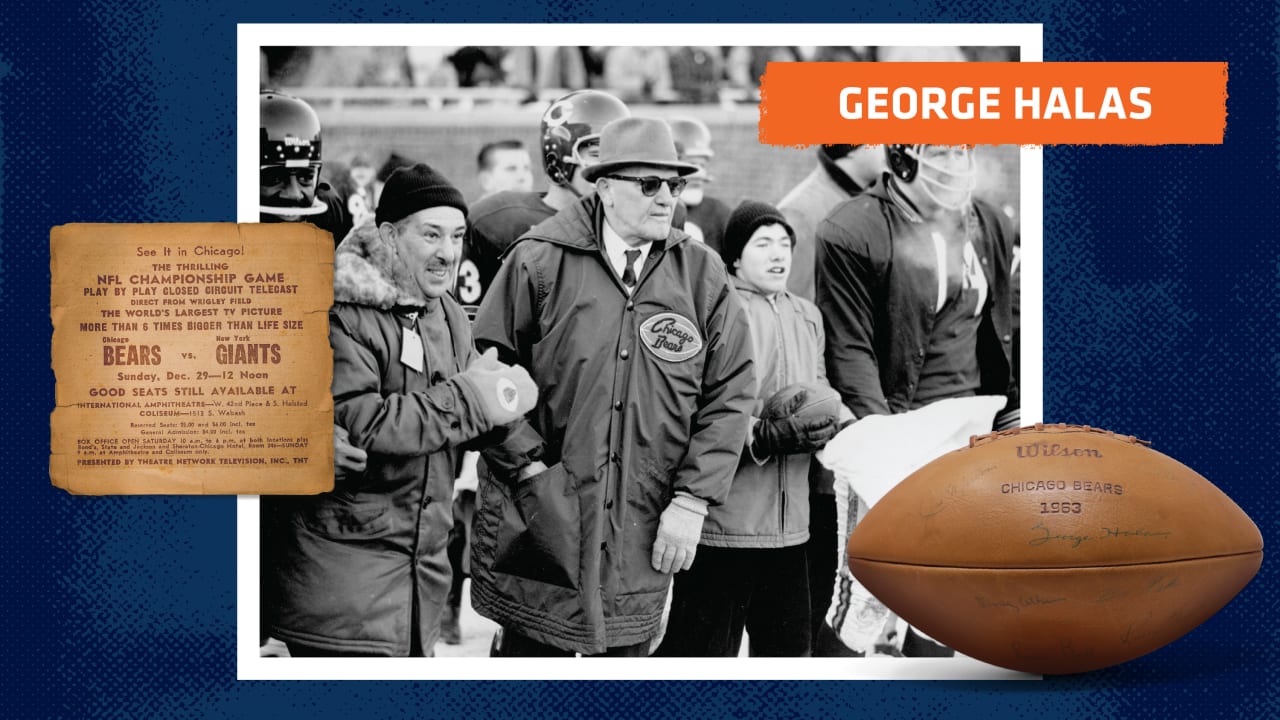Staley Da Bear
Well-known member
- Mar 16, 2019
- 2,085
- 0

Football melds ethnicities and races into a tense and harsh struggle for territory, identity and livelihood. It depends on more teamwork, requires more perseverance, employs more strategy, rewards more preparation, encourages more toughness, endure more ferocity, and present more obstacles than any other sport, all qualities that mirror the Halas family story.
In Bohemia, Halas was pronounced Halash, accent on the second syllable. George Halas’ ancestors immigrated to Chicago and gave daily thanks for their new life in the new world. Resourcefulness accompanied them. Father Frank Halas worked as a reporter for a Bohemian language newspaper before becoming a tailor. Mother Barbara sewed such meticulous buttonholes that her reputation became a part of family lore and pride.
After suffering a stroke, Frank sold the tailoring business and built a three-story structure at 18th and Wood, where he rented apartments and where Barbara opened a grocery store. George Stanley Halas was their eighth child, one of four who survived infancy, three brothers and a sister.
A little over a mile from home was Cubs Park, and sometimes the Halas boys had to fight and sprint their way through neighborhood bullies to visit. Occasionally, Cubs manager Frank Chance invited George and brothers Walter and Frank through the pass gate to the field, where they could witness the celebrated double plays of Tinkers to Evers to Chance. When George began reading Frank Merriwell stories and dreaming of a life in sport, his father tore up the magazines. It was too late.
Undersized, Halas overcompensated with determination and speed. His brothers called him kid, and he grew up calling everyone else kid. When he was 15, his father died on Christmas Eve, and his mother increased his weekly salary for chores from 50 to 75 cents, demanding he save a portion for college. At Crane Tech high school, George ran track and played indoor baseball. He made the football team, the lightweight version because he couldn’t top 120 pounds. When George was 16, he demonstrated early aptitude for his life’s work. He helped organize a neighborhood baseball team, collected dues, and played other teams for money, sometimes taking along hand-picked umpires.
Baseball was his favorite sport at first. “I’m still amazed that I ever got into pro football in the first place,” Halas wrote in a 1967 article for the Chicago Tribune. “I made more base hits than tackles at the University of Illinois.”
Brother Frank convinced the family to delay George’s college a year so he could gain weight. George worked in the payroll department of Western Electric, played baseball and ate. By the time he entered college, he weighed 140 pounds, and freshman football coach Ralph Jones made him a backup halfback.
Another summer at Western Electric added another 20 pounds. One providential afternoon, George was late for a Lake Michigan boat trip to the company picnic—the 1915 Eastland disaster that claimed 844 lives when it capsized during loading, the worst maritime toll in Great Lakes history.
Illinois coach Bob Zuppke lamented the loss of players to graduation just as they were developing. Halas figured the ragtag pro teams scuffling around Pennsylvania and Ohio mining and mill towns since the 1890s, often illegally luring collegians under assumed names, might not be such a bad idea.
In 1918, at the tail end of World War I, Halas joined the Navy. He was assigned to the sports program at Great Lakes Naval Station in North Chicago, where he played football with Northwestern’s Paddy Driscoll and other stars. They won the 1919 Rose Bowl against the Mare Island Marines, and Halas was named Most Valuable Player. Halas said the experience left him “astounded” by the high level of post-college play, confirming Zuppke’s view.
